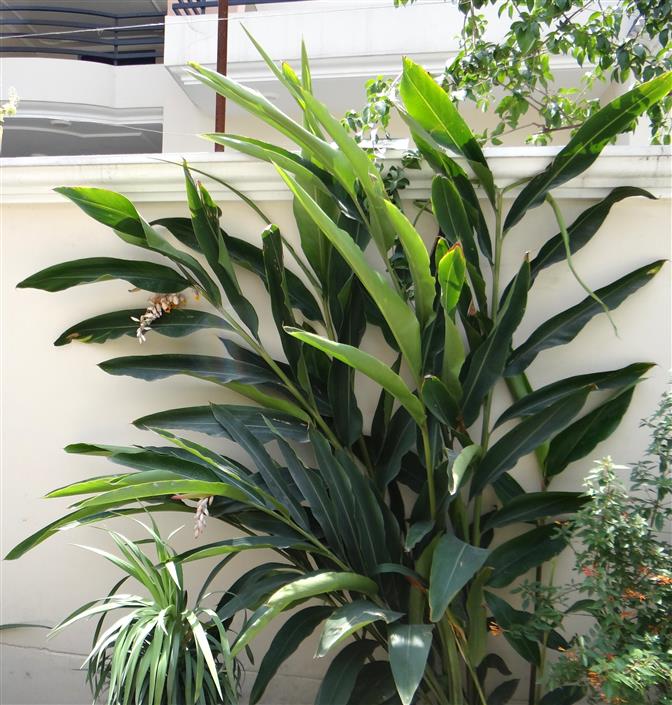ZINGIBERACEAE
Rhizomatous perennial herbs, usually terrestrial, rhizomes tuberous or non-tuberous, often with tuber-bearing roots. Aerial stems usually short, replaced by pseudostems formed by leaf sheaths. Leaves basal or basal and cauline, distichous, differentiated into leaf sheath, petiole, ligule and lamina, petiole sometimes absent; sheaths often overlapping forming pseudostem, open on the side opposite to lamina; lamina suborbicular, lanceolate to narrowly strap-shaped, rolled longitudinally in bud, lateral veins parallel diverging from prominent midrib. Inflorescence 1 per aerial shoot, terminating short stem without laminate leaves or projecting from tip of pseudostem, pedunculate racemes of flowers or 2-7-flowered cincinni; bracts of main axis enclosing or subtending flowers or cincinni. Flowers bisexual, zygomorphic, epigynous. Sepals 3, connate; calyx tubular, thin, split on 1 side, sometimes spathe-like, apex 3-lobed or 3-toothed. Petals 3, connate into proximal tube and distal 3-lobed limb, lobes varying in shape and size. Stamens or staminodes 6, in 2 whorls. In outer whorl, 2 lateral staminodes petaloid or forming small teeth at base of labellum or adnate to labellum or absent; median staminode always reduced. In inner whorl, 2 lateral staminodes form a large, showy labellum; median stamen fertile, filament long or short, anthers bithecous, dehiscence usually by longitudinal slits, introrse, connective often extended basally into spurs and/ or apically into a crest. Ovary inferior, 1 or 3-locular, ovules numerous per locule, placentation parietal, axile or basal; developed style 1, filiform, placed in a furrow in filament and between the anther thecae; stigma appearing above anther, funnelform, papillose, +/- wet, margin often ciliate; stylodes 2, reduced to nectaries at apex of ovary. Fruits capsules or berries; calyx often persistent in fruit. Seeds arillate.
57 genera and about1600 species
